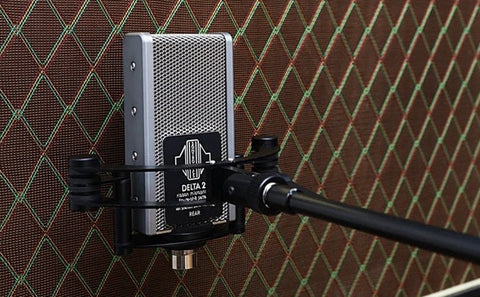In the world of audio recording, the ribbon microphone holds a special place. Renowned for their warm, natural tone, they have been a favourite of sound engineers and musicians for decades. As audio technology evolves, ribbon mics remain a staple - celebrated for their unique characteristics. But what makes these microphones stand out, and why should they be handled with care? Here’s everything you need to know about ribbon microphones.
What Are Ribbon Microphones?
The ribbon microphone, named for the thin metal ribbon suspended between magnetic poles inside the mic, capture sound by responding to the velocity of air particles rather than the sound pressure in the air. This unique design gives ribbon mics their characteristic smooth frequency response and exceptional sensitivity to dynamics.
Unlike condenser or dynamic microphones, ribbon mics excel at providing a natural sound, often described as "vintage" or "organic." Their figure-8 polar pattern (which picks up sound equally from the front and back while rejecting it from the sides) adds another layer of utility, making them a preferred choice for certain recording environments.
Why Choose a Ribbon Microphone?
Ribbon mics are prized for their ability to reproduce audio with unmatched realism. Here are some of their standout benefits:
- Warm, Smooth Sound: Ribbon microphones naturally attenuate high-frequency harshness, which results in a silky and smooth sound. This quality makes them ideal for capturing vocals, strings, and brass instruments.
- Rich Detail: The ability to pick up subtle nuances means the ribbon mic is a favourite for recording acoustic instruments and orchestras.
- Natural Frequency Response: The design of ribbon microphones allows them to capture sound without the overemphasis or artificial boost of certain frequencies, resulting in a more balanced and authentic recording.
- Versatile Placement: With their figure-8 pattern, ribbon mics can be used creatively to capture room ambiance or isolate sound sources when placed strategically.
What Sounds Do Ribbon Microphones Work Best With?
Ribbon microphones shine in a variety of applications, including:
- Vocals: They are particularly effective for singers with brighter or harsher vocal tones, as they smooth out unwanted sibilance and shrillness.
- Acoustic Instruments: Guitars, violins, and pianos benefit from the detailed and natural sound capture of ribbon mics.
- Brass and Woodwinds: Their ability to tame sharp transients makes them excellent for trumpets, saxophones, and flutes.
- Drum Overheads: a ribbon mic delivers a balanced and warm tone for cymbals and room ambiance.
- Electric Guitar Amps: They capture the midrange growl of electric guitars without adding harshness, making them a go-to for recording amps.
Special Considerations When Using Ribbon Microphones
While ribbon mics offer incredible benefits, they require extra care due to their delicate construction. The ribbon element is extremely thin and sensitive to physical damage. Dropping a ribbon mic or exposing it to strong air pressure (like blowing into it) can tear the ribbon.
Recent advancements have addressed some traditional weaknesses of ribbon microphones. Modern models, such as active ribbon mics, integrate built-in
preamplifiers, meaning they are capable of handling a wider range of
recording situations. This innovation bridges the gap between vintage charm and
contemporary convenience.
Sontronics Ribbon Mics
Whether you're recording a soulful vocal performance, a delicate acoustic guitar, or a roaring electric guitar amp, a ribbon microphone can add a touch of magic to your sound.
For more information you can visit our Ribbon Mics page to view the Sontronics product range or watch our Facebook reel about ribbon mics.

